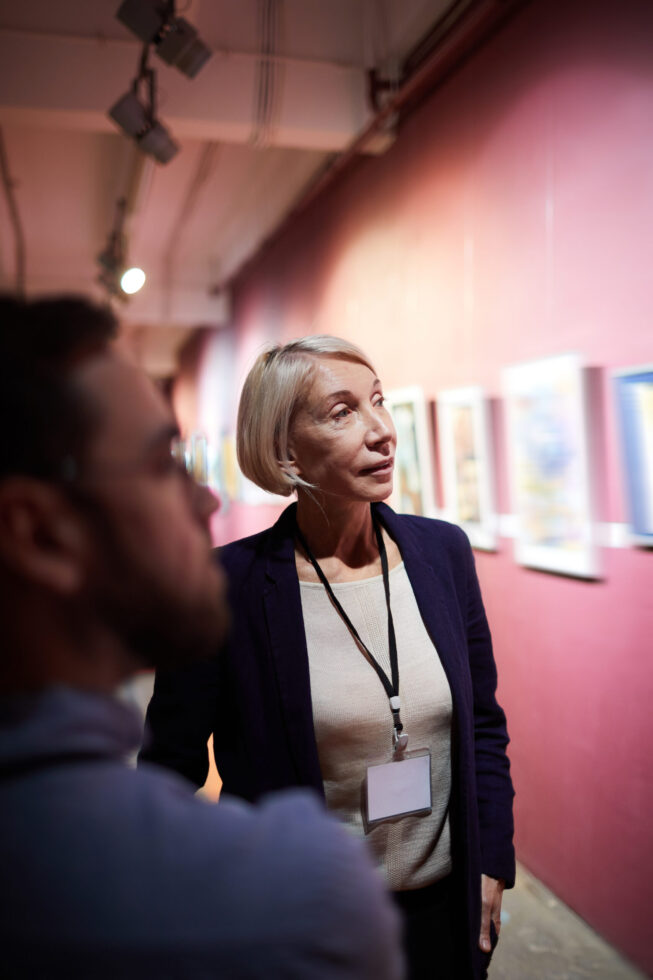Art & Culture
Lorawan IoT Sensors
Specialty use cases for specialty places
Many times, we forget that the Internet of Things (IoT) can enable innovation outside of SaaS and “smart” applications. We primarily associate digitization with next-generation cities, new-age security, predictive maintenance, and automated supply chain management. However, this thinking can be expanded to many other innovative use cases.
The IoT and smart sensor technology can be used in many ways that aren’t immediately apparent. For example, remote monitoring has implications for cultural institutions and experiences, as much as in industrial plants and warehouses.
Today, we can install wireless devices in museums, art galleries, botanical gardens, and more to track environmental conditions and protect important assets. We can supplement monitoring systems and enable caretakers to preserve important artifacts.
Modern LoRaWAN® networks can support hundreds or thousands of devices simultaneously without incurring exorbitant infrastructure costs. With low-power, low-cost sensors, such as those offered by MultiTech, organizations can easily stay on top of the precious items, relics, and antiques that they own.
Protecting Art Galleries
For obvious reasons, environmental monitoring and preservation is incredibly important for art galleries. Many collectors and art owners won’t loan their collections to others that don’t have a sophisticated monitoring solution in place.
Wireless IoT sensors offer a reliable, cost-effective approach and safety net for institutions that display art. For example, curators can use wireless temperature sensors to track internal climate and ensure that ideal conditions exist in every room for certain types of pieces. Experts believe that air temperature should remain between 70 and 72 degrees Fahrenheit at all times. Temperature sensors can send alerts whenever data readings fall above or below this narrow range.
Tracking humidity levels is also crucial. Wireless humidity sensors can help curators ensure the right level of moisture exists in the air for different forms of art. Too much humidity can warp wood, damage metal sculptures, and facilitate mold growth. Too little humidity can cause paintings to dry out or crack. Fortunately, cost-effective wireless sensors enable curators to mitigate risk in this area.
Wireless air quality sensors also play an important role in art galleries. Air-based pollutants can permanently contaminate canvases and other art surfaces. On the guest experience side, these sensors can also protect people from harmful gas leaks by warning official personnel of potential leaks. With wireless bridges, facility managers can connect any third-party, off-the-shelf gas leak sensors directly to LoRaWAN networks.


Monitoring Museum Artifacts
Museum facility managers can also benefit from IoT sensor technology. In addition to the environmental monitoring solutions described above, these institutions can supplement security protocols with wireless sensors that detect motion and opening and closing events.
Security teams can install wireless door and window sensors at any potential entry points for thieves. Wireless proximity sensors can also protect certain rooms or areas where guests aren’t allowed. In these instances, it may not make sense to pay a security guard to watch over a prohibited area that a wireless sensor could easily monitor. Both of these devices will send messages directly to the cloud about potential break-ins over LoRaWAN or other wireless protocols.
Security leaders can also place wireless acceleration-based movement sensors on platforms that support larger artifacts that mischievous guests may be tempted to move. Or, they can install wireless panic buttons throughout buildings for guests or security personnel to trigger in the event of an emergency.
All of these devices are useful for bolstering onsite security in different ways. Each can be configured to detect security threats that would otherwise compromise museum artifacts and possessions. Overall, wireless sensors are a tremendously cost-effective way to protect high-value items that are, by definition, impossible to replace.
Wireless sensors also complement camera systems well because they can automatically alert security teams when something is wrong. Therefore, facility managers do not have to allocate human resources to constant video surveillance or spend additional capital on expensive video systems.


